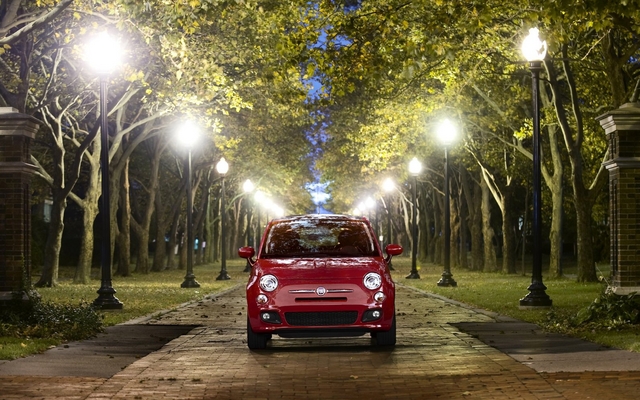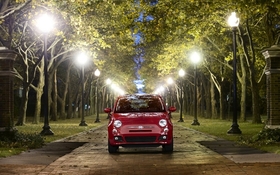2011 Fiat 500: A Twenty First Century Topolino

| Strong points |
|
|---|---|
| Weak points |
|
At the age of 8 or 9, going to the junkyard on a Saturday afternoon with my dad ranked amongst the best possible ways in which a day could be spent. This, of course, was back when going to an auto wrecker involved a pair of coveralls, a keen eye, a knowledge of what parts were used in what car, and a cursory set of tools that could MacGyver pretty much any part out of pretty much any wreck. And as a kid, the hours my dad would spent sweating and swearing at heater cores and intake manifolds were hours I spent looking for interesting hood ornaments, glove box contents, and pretty much anything shiny that I, or a magpie, would be drawn to. And after all the trips to the auto wrecker that I made as a child, there are two days in particular that stick out: the day that I saw my first wrecked Lotus Esprit, and the day that I stumbled across the burned out hulk of an old '30s-era Fiat 500 Topolino.
So imagine my glee, as just shy of 20 years later, I found myself walking up to the modern interpretation of that famous Italian automobile: the 2011 Fiat 500. Looking much closer in lineage to the Fiat Nuova 500 that replaced the older Topolino model in 1955, the new car draws a much straighter line to its forebears than does its chief competitor, the Mini. Whilst the German-made knock-off of what may be Britain's most famous car may carry more than a few recognizable cues, the genuine Italian article's proportion are much more in keeping with its pedigree. And, when combined with it's cute-as-a-button good looks, make for a package that drew more comments than any other vehicle I've tested, with the exception of the Audi R8. Everyone from gunsmiths to grandmothers wanted to get a closer look at the diminutive little coupe, and all came away impressed by both the styling and execution of both the exterior, and interior.
Because as darn tootin' cute as the outside is, the interior is in my opinion, the Fiat's most impressive part. As one can plainly see from the pictures, it artfully adds a significant portion of modernity to a great retro-inspired design, and the result is one of the best looking cabins on the market today. The seats are a prime example; being well sculpted and supportive (as any new cars' seats should be) but covered in classic-looking tuck-and-roll style leather upholstery that can be had in ivory and brown, black, red and black, or red and white. And in an homage to the days of steel dashboards that were actually of one piece with the car's firewall, Fiat has chosen to paint the 500's dashboard in the same hue as the exterior paintwork. Although it looked pretty good on my Bianco Perla (pearlescent white) tester, a quick trip through the Fiat 500 build-and-price tool on Fiat Canada's website has me thinking that mine would have to be either light or olive green.
But the sword of Italian automobiles cuts both ways. Although predating the Volkswagen Beetle by a couple of years and the BMC Mini by a couple of decades, the Fiat 500 never quite garnered the same recognition worldwide, due in large part to the car's other inherent... ahem... Italian qualities. Trading style for substance in some ways, the old rear-engined car was often billed as "easy to repair," rather that "reliable" in contemporary reports. So, it was with a sort of begrudging respect that I addressed the engine temperature warning light that sporadically alerted me to its presence without rhyme or reason. Likewise, instead of being frustrated by the broken seat height adjustment lever, I saw it's uselessness as an existentialist reminder of Fiat's past, present, and probable future. But try as I might, I never did find a way to put a nice spin on the misaligned radio trim piece in the dashboard; that was just annoying.
Although that engine light may have given me a fright the first time it popped into glaring existence, the little Italian hatchback trundled down each and every road I asked it to without so much as a hiccup, and even bumpy roads were traversed without the many squeaks and rattles that accompany a new Mini's passing. On the highway, the power supplied by the 1.4 litre MultiAir engine was commendable, even when passed through the traditional torque converter-equipped six speed automatic. But it was in the confines of Vancouver's glass and steel superstructure that the little 500 really came into its own. Although feeling vastly larger than it actually was due in large part to the bubble-like cabin profile and (forcibly) high seat height, the tiny 500 squirted through holes and down roads that would have had larger vehicles folding their mirrors in defeat. The ride is smooth enough to take the edges off the various storm drains, curbs, and cobblestones that inner-city drivers have to cope with, but solid enough to give the impression of supreme control over the four tiny contact patches. And the steering... che bella! Quick, light, and devastatingly accurate, the steering wheel literally comes alive in your hands when you're pushing the car in even the slightest fashion, turning in with alacrity when you're on the brakes and wriggling and writhing slightly under power when you come out of a corner; both tasks completed in a manner that is to driving enjoyment as Oscar Wilde was to witty banter.
So, for all its unique (and generally harmless) foibles, I must admit that I fell completely and utterly in love with Fiat's 500 over my week long sojourn. It's comfortable and spacious in a way that I haven't experience in a car anywhere near its size, it's absolutely fantastic looks are more than matched by the similarly excellent road manners, and most importantly, it drips personality at a time when cars seems to strive for soullessness. Seat adjusters and engine temperature senders can be fixed, but you can't head down to your local mechanic and get him to install character. And perhaps best of all, setting yourself up with one of these little beauties won't cost you nearly or dearly as much as most other Italian exports. In fact, with prices starting at $15,995, this is one Italian job that's quite a steal.











